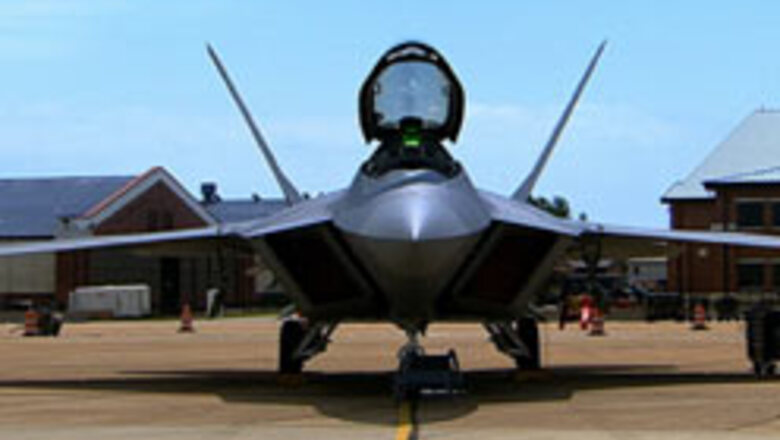
views
New Delhi: The warplane has evolved over nearly a century from the primitive 'eye in the sky' stage to become what it is today, the sleek machine.
From Orville Wright's historic flight, pilots are today reaching the final frontier - space. This evolution has come about through life-and-death necessity, invention, ingenuity and sheer hard work.
It's a gripping tale of military aviation and aerial combat waiting to be told. And for the first time in the history of Indian television, National Geographic Channel and CNN-IBN has mapped this story for the small screen — interluded with all the action, all the drama and the major landmarks in the mankind's pursuit of power.
It begins with the story of the jet engine, which was a defining piece of mid-20th Century technology that led to revolutionary change in aerial combat.
The jet engine, in fact, blurred the lines of distinction between the roles of fighters, bombers and attack helicopters. Huge risks were taken by designers, test-pilots and combat air crews to put these jets in motion.
Gradually, the airplane was born into conflict and shaped by war. The evolution of bomb-delivery systems and their vulnerability to fast-evolving fighter technology provided one of the key sub-plots of the World War II.
But as the military importance of the warplane grew, so did demands on its performance, demands that would lead to dramatically improved aerodynamics as the streamlining rid the plane of its primitive structure and sophisticated communications that would allow the commanders to wield the mighty weapon of air power with devastating effect.
Over the course of history, the war plane has taken on multiple roles, just as vital over the deserts of the Middle East in 2003 as it was over the trenches of France in 1914.
Aerial combat was once just a little more than dueling in the sky, a counter-measure to the main task of superior investigation. The evolution of fighter tactics was inevitable. The accompanying technology was fast, furious, and definitive, an evolution that paralleled the plane's potential as an "eye in the sky".
The warplane has come of age since. In the next stage came the stealth, the master of the skies. They bring the promise of victory without pain. And then the F-22 Raptor, the world's latest warplane. The Raptor can fly for long periods, break the speed of sound, strike and be gone in a second.
Within 66 years of Orville Wright's historic flight, pilots were reaching the final frontier - space.
American aviators could now look down on Kitty Hawk, North Carolina from the Moon while they were watched from earth on live television. Not only is it fast, the Raptor is almost invisible to radar. That marks the advent of stealth technology. Warfare would never be the same again.
(Don't miss this mesmerising story on CNN-IBN and the National Geographic Channel. Check out the timings and rework your schedules to make sure you witness history unfold)




















Comments
0 comment